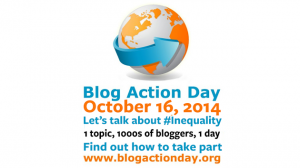I promised (in the third post of this series) to wrap up with a look at disabilities and unvisible differences. “Disability” is a freighted word in itself, but it’s still the descriptive term used most often, so I’ll stick with it. But I’ve invented the word “unvisibility” to refer to minority groups that can’t be distinguished in a visual portrayal.
The primary unvisible community is lesbian, gay, bisexual, and transgender (LGBT), but other groups would include the invisibly disabled, as well as those of a minority ethnic group that isn’t visually obvious. The American with Disabilities Act of 1990 defines disability as “a physical or mental impairment that substantially limits one or more major life activities,” which includes a wide variety of conditions that wouldn’t show up in a photograph. Similarly, many Native Americans and Americans of Hispanic descent are not visibly distinguishable from non-Hispanic whites.
I looked for a company that does a good job of talking to and about these communities, and came up with Ernst & Young. Search “disability” or “LGBT” on their website, and you’ll find a variety of informational articles and other communications, including: a brochure about their AccessAbilities program offers an excellent guide to understanding disabilities in the workplace, and another called Making It Real, “moves beyond corporate policy” to look at the “day-to-day lives of LGBT employees.”
Ernst & Young uses the term “inclusiveness” to refer to all its programs taken together, and “diversity” to refer to ethnic groups. In some ways that’s an attractive approach, since “inclusiveness” seems more about integration than about difference. But on the other hand . . . “inclusiveness” seems more passive. It suggests that folks will be welcomed if they turn up, whereas “diversity” implies actively inviting folks in order to create a more broadly representative workplace.
Ideally, a company should choose the terminology that best reflects their approach and culture. But whatever word is used—there’s still the matter of how to get the message across on the website. Disabled and unvisible groups are more difficult (and sometimes impossible) to represent in images, so there is more dependence on text.
Ernst & Young does a thorough job of covering this territory, but they take a pretty subtle approach! It unfolds like this:
- Go to Careers, then choose Life at Ernst & Young from the left nav.
- On the “Life at” page, choose the text link “people from different backgrounds and cultures.”
- Now you’re at a page titled “Inclusiveness and flexibility.”
- From here you can click on text links for “gender,” “ethnicity,” “sexual orientation,” and “physical disability.”
- Each of those links will take you to a page with a pleasantly vague title, like “Supporting women’s leadership” (gender) and “Bringing people together (physical disability).
- Each of the sub-pages talks about Ernst & Young’s approach to the particular topic and provides links to a variety of communication materials, like the brochures noted above.
Too subtle? Hard to say. But it seems like a good fit for the site, which is restrained, and for the employer brand. Besides, subtlety may well be the trendy direction . . .
Demographic projections indicate that the concept of “minority” will be irrelevant in the not too distant future, because no one racial group will compose more than 50% of the U.S. population. Meanwhile, the LGBT community continues to be more and more equalized, both in law and social custom. And globalization means that the person in the next cube is just as likely to be from another continent as from another race, gender, sexual orientation, or physical condition.
So we can look forward to the time when all these concerns will have been forgotten.
But in the meantime—my takeaway from working on this series is: Companies should give very serious thought to how they present and portray their working culture, both verbally and visually. Are there unintentional “diversity” messages on your Careers website?
Cynthia Giles has followed a serpentine career path from academia to publishing to marketing and design to information technology and corporate communications. There’s plenty of detail about this journey at www.cynthiagiles.com, but briefly--the common theme has been ideas, and how to present them effectively. Along the way, she became an accidental expert on data warehousing and business intelligence, and for the past ten years she has combined corporate contracting with an independent consulting practice that focuses on marketing strategy for smaller businesses and non-profits.
Having spent quite a bit of time looking for work, and anywhere from two weeks to two years inside a wide variety of American companies—she has given much thought to what works (and what doesn’t) when it comes to creating a great employment fit.



I would like to speak to the author of this article. Please contact me at ascott@ontario.cancer.ca
Thanks,
A Scott